In this blog post, Amoolya Narayan, an Associate at Economic Laws Practice (ELP) and a former student of West Bengal National University of Juridical Sciences, helps us understand the different nuances the Civil Procedure Act. Amoolya has included several exercises that help us understand the different segments of the Act and in turn test our understanding.
Why do we need laws on Civil Procedure?
Broadly, there are two kinds of disputes in the courts of law – civil and criminal offences. Any transgression of the law that does not amount to a criminal offence or crime is a civil offence. The Civil Procedure Code is a code that lays out the procedure to be followed by the parties and the machinery they must engage in order to get their rights enforced. Such a law is known as an adjective law.
Point of Interest
The fundamental principle of English law is that of ubi jus ibi remedium, which means, wherever there is a legal right there is a legal remedy or there is no legal wrong without a remedy.
Jurisdiction
Even courts derive their power to interpret the law and impart justice from a higher law. In this case, the Constitution of India gives powers to the Central Government to enact a procedural statute such as the Civil Procedure Code which lays down the limits of the jurisdiction of various courts.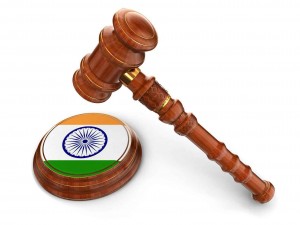
Jurisdiction may be defined as the power or authority of a court to hear and determine a cause and to exercise any judicial power in relation to it.
Thus, if a court passes an order on a case that is outside its jurisdiction, the order is void and need not be heeded by the pa
rty. Similarly, where a court has jurisdiction, the parties do not have any power to take away the same by virtue of an agreement.
The way a civil case precedes is that a matter is first brought to the court by one of the parties and the court examines the claim being made. Upon deciding whether it is a just claim, a notice is served upon the alleged wrong-doer; the court sets the process of adjudication in motion.
What are the special features of Civil Procedure?
(a) Any private party may file a civil suit against another private party. In a criminal court proceeding, the prosecution, which is the State’s counsel, levels the charges.
(b) Also, in a criminal proceeding, the burden of proving that the crime was committed by the defendant lies on the prosecution. The defendant only has to ensure that the evidence brought forward is not enough to find him guilty.
(c) In a civil case, if the plaintiff establishes that it is more likely that the offence was committed than not, a notion is known as ‘preponderance of probability’, the burden of proof will shift to the defendant.
A civil offence may concern issues such as property disputes, matrimonial disputes and most economic offences.
Point to be noted, milord!
There are some offences that may be civil and criminal in nature. This means that the person who has been affected may proceed against the other on civil and criminal charges and institute suits on both grounds. Charges such as negligence, adultery and defamation may have civil and criminal consequences.
Suit and Adjudication
The word suit has been defined by the courts. The word ‘suit’ means a civil proceeding instituted when a person, known as the plaintiff, presents a written statement known as a plaint to the court. It is brought against the defendant, and when there is no civil suit there is no decree.
When the court makes a determination on judicial grounds on the matter that was brought up in the dispute, it is known as adjudication. This means, that when a court considers the issues at hand, using well-developed judicial principles, and makes a decision regarding the dispute, it has done its job.
When a suit is brought to the court, the court takes steps to hear both sides of the dispute, and then after examining the evidence adjudicates upon the dispute. A decree is passed by the court after adjudicating upon the matter or all the matters raised in the suit; this decree directs the losing party to take the necessary action for the winning party.
Decree, Judgement and Order
A Court may pass an adjudication relating to certain matters in a suit or all the matters in the suit.
There are basically three types of decrees:
- Preliminary decree
- Final decree
- Partly preliminary and partly final.
Preliminary decree
When a Court’s adjudication decides the rights of the parties with regard to all or any of the matters in controversy in the suit but does not completely dispose of the suit, it is a preliminary decree.
A preliminary decree is passed in those cases in which the Court has first to adjudicate upon the rights of the parties and has then to remain inactive until it is in a position to pass a final decree. In the case of an appeal against a preliminary decree, the final decree automatically falls for there is no preliminary decree thereafter in support of it.
For example, a wife sues her husband for maintenance. In the course of making a determination, the court must also decide whether she gets maintenance during the time the trial is taking place. This would amount to a preliminary decree.
Final decree
A decree may be said to be final in two ways, when there has been no appeal filed against the decree or when the matter has been decided by the highest Court, or when the Court passing it completely disposes of the suit.
A final decree is one which completely disposes of the suit and finally settles all the questions in controversy between the parties and nothing further remains to be decided thereafter. Ordinarily there will be only one final decree in the suit. However, where two or more causes of action are joined together there can be more than one final decree.
For example, in a suit for the title of a particular property, when the court decides who has the title of the property it is the final decree in the suit.
Partly preliminary and partly final
A decree may be partly preliminary and partly final and this may be explained by way of example.
For example, here, two brothers argue over who inherits the family property from their late father. This property is currently leased out to a family. While the determination of who gets the property is the subject of the final decree, the determination of who gets the profits that accrue from the lease rent being paid during the length of the trial, is a matter of partly preliminary and partly final decree.
For example, Santosh and Mohan were fruit wholesalers who received a large contingent of fruits by delivery. Once there arose a dispute as to who owned the fruit contingent after it had been delivered. A plaint was presented and the court began to look into the matter. However, the fruits were perishables and could not have withstood the duration of the trial. When the plaintiff pointed this out, the court ordered that the defendant must sell off the fruits, but an account of the cost and profits must be kept. Is this a final decree by the court?
No, this is not a final decree as it does not determine the issue of the ownership of the fruits. Since that was the matter which was brought before the courts, and it has not been determined, this is not a final decree.
Ex-parte Decree
An ex parte decree is a decree passed in the absence of the defendant. Such a decree is neither null and void nor inoperative but is merely voidable and until it is annulled, it has all the force of a valid decree.
Remedies in case of ex parte: The procedure prescribed for an ex parte decree goes against the principle of granting everyone a fair hearing. Thus, there are many provisions for the defendant to apply for setting aside the ex parte decree.
He can apply under Order 9, Rule 13 by proving that he could not attend court due to either of the following grounds:
(1) the summons was not served properly, or that
(2) he was prevented by any sufficient cause from appearing when the suit was called for hearing.
For example, in a suit where the decree was passed against both the defendants, but only one had received the summons and was present in Court, the Court set aside the decree of the party who was not present. It was held that the decree was still valid against the attending party.
Judgement
Judgement means the statement given by the Judge on the grounds of a decree or order. The essential element of a judgment is that there should be a statement of the grounds of the decision. Every judgment must contain:
- A concise statement of the case
- The points for determination – the decision thereon
- The reasons for such acquisition.
A judgment can be distinguished from a decree in the sense that a judgment means the statement given by the Judge of the grounds of a decree or order. A judgment contemplates a state prior to the passing of a decree or an order, and after the pronouncement of a judgment, a decree shall follow.
Order
An order means ‘the formal expression of any decision of a civil court which is not a decree’. A judicial order must contain the discussion of the question at issue and the reasons which prevailed with the Court to pass the order. The distinction may be drawn between a decree and order on the following grounds
- A decree can only be passed in the suit which commenced by the presentation of a plaint. An order may arise from a petition or application.
- A decree conclusively determines the rights of the parties however an order may not finally determine such rights.
- There cannot be a preliminary order.
- In certain suit is one preliminary decree and the other final decree may be passed, however, a number of orders may be passed in the same suit.
- Every decree is appealable but every order is not unless specified.
Sub Judice
There are some suits that are barred from being filed in a Court, for reasons apart from the Court’s lack of jurisdiction.
The Court can proceed with the trial of any suit if the subject matter of the suit is already in issue in a previously instituted suit between the same parties. This is subject to the fact that the Court in which the previous suit is pending is competent to grant the relief claimed.
For example, Kumar instituted a suit against Akshara for divorce on grounds of mental cruelty. Akshara filed a suit against Kumar at the same time for custody of their child. The subsequent suit is not barred by sub judice because it is not the same subject matter being adjudicated upon in the second suit.
For example, Trina instituted a suit against Munni for recovery of some property. While the suit was still pending in court, Trina instituted another suit against Munni for the profits from the property during the pendency of the suit. This subsequent suit is barred by sub judice as it relates to the same property.
Res Judicata
Section 11 bars a suit where the matter has already been adjudicated upon in a previous suit. It bars the trial of a suit or an issue in which the matter directly and substantially in issue has already been adjudicated upon in the previous suit.
The object of Section 10 is to prevent the courts from simultaneously entertaining and adjudicating upon two parallel litigations in respect of the same cause of action, the same subject matter and the same relief. 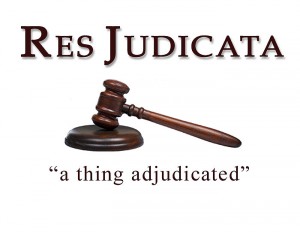
The policy of the law is to confine the plaintiff to one litigation process, thus negating the possibility of two contradictory verdicts on the same matter. It intends to protect the person from multiplicity of proceedings and avoid a conflict of decisions.
Certain conditions must be fulfilled for the application of this section. These are:
- There must be two suits, one previously instituted and the other subsequently instituted
- The matter in issue in the subsequent suit must be directly and substantially in issue in the previous suit
- Both the suits must be between the same parties or their representatives.
- The previously instituted suit must be pending in the same Court where the subsequent suit is brought in or in any other Court in India or any other Court beyond the limits of India established or continued by the Central Government or before the Supreme Court
- The Court in which the previous suit is instituted must have jurisdiction to grant the relief claimed in the subsequent suit.
- Such parties must be litigating under the same title in both the suits.
For example, Dutta filed a suit against his brother-in-law, Gupta, for his share in the family property after a relative died intestate. At the same time, Gupta wanted to file a suit over the splitting of the family business between them. The second suit is not barred because the matter in the subsequent suit is not directly and substantially in issue in the previous suit.
For example, there was a suit pending before the US Federal Court over the compensation amount for victims of a disaster caused by an American company in India. This does not bar a similar suit from being instituted in any court in India at the same time, as long as the Indian court has jurisdiction.
For example, the victims of a road accident filed a suit against the insurance company to get the insurance money for the damaged vehicle. At the same time, a suit for compensation was instituted against the owners of the vehicle that caused the accident. The second suit is not barred by the first suit as they do not concern the same two parties.
Legal Representative
“Legal Representative” means a person who in law, and for legal purposes represents the estate of a deceased person. This may include any person who intermeddles with the estate of the deceased; any person who acquires the land through the laws of succession due to the death of a party involved in a suit will also be the ‘legal representative’ for the purpose of the law.
For example, Jeevan was fighting a case in the court over the title of a residential property. He died during the time the suit was still pending. In his Will, he had left the property to his wife. She is Jeevan’s Legal Representative.
Constructive Res Judicata
According to this principle, if a person has established a position in a particular suit, then anything that naturally flows from that position may be construed by the courts. Therefore, the same person cannot take a conflicting position in a subsequent suit. He is barred from doing so by constructive Res Judicata.
For example, in a case on revenue matters, Malik had had taken the plea that he was not a tenant on the suit land. Therefore, in any subsequent suit by a mortgagor for selling the property, it is not open for him to take up the plea that he was living on the land as a permanent tenant.
Res Judicata will be applicable if the matter in controversy might and ought to have been raised in the previous suit.
Place of Suing
The Court system operates on the basis of a hierarchy, where the District Court is below the High Court. All other courts such as sessions courts and small causes courts are below the High Court.
This distinction is made on the lines of pecuniary jurisdiction and territorial jurisdiction. Pecuniary jurisdiction means that the Court cannot hear any cases where the relief amount claimed is greater than the court has the power to award. Territorial jurisdiction lays down a physical boundary declaring that if a cause of action arises outside the defined physical boundary, the court does not have jurisdiction over it.
Every suit shall be instituted in the Court of the lowest grade competent to hear the issue. This is with reference to the pecuniary jurisdiction of the Court.
Mesne Profits
 Mesne profits of property means the profits made by a person who was in wrongful possession of that property. Whatever he has actually received or might have received, together with interest calculated on it, shall be said to be mesne profits. However, he has the right to retain the profits gained by any improvements he has made to the property.
Mesne profits of property means the profits made by a person who was in wrongful possession of that property. Whatever he has actually received or might have received, together with interest calculated on it, shall be said to be mesne profits. However, he has the right to retain the profits gained by any improvements he has made to the property.
It is a compensation which is penal in nature because every person is entitled to possess the property and gain profit from it. If a person is wrongfully deprived of such property then he is entitled to the property and the profit which accrued from it. The calculation of mesne profit is done by the Court. And the following principles guide the Court in determining the amount of mesne profit
- No profit by a person in wrongful possession
- Restoration of status before dispossession of the decree holder
- Use to which the decree holder would have put the property if he himself was in possession.
For example, Muthanna and Ramanna have a disagreement about the ownership of a Property X and the issue was taken to Court. Muthanna lives in a house built on this property and had rented out a room on the 1st floor to tenants. He also added floors to the building and now rents out the 2nd and 3rd floor as well. At the end of the trial, the Court decreed that the land belonged to Ramanna. Ramanna gets the mesne profits from the rent for the 1stfloor room, but since Muthanna added the improvements at his own cost, the profits from the 2nd and 3rd floor room rent will not be given to Ramanna.
For example, Vandana had wrongfully usurped Poorna’s land 8 years ago and had since done extensive damage to the land, making it uncultivable. At the legal battle that ensued, the Court held that Poorna was to get mesne profits, which included restoring her to her status before Vandana wrongfully took it from her. This means that Vandana must also pay to make the land cultivable again.
Representative Suits
This kind of suit may be filed by one or more persons on behalf of others having the same interest in the suit. Certain conditions must be fulfilled in cases of representative suits. This includes:
- Parties must be numerous
- They must have the same interest in the suit
- Permission must be granted or direction must be given by the Court
- Notice must be given to the parties to be represented in the suit.
This is different from Public Interest Litigation because the requirement of locus standi is more relaxed and it is not necessary for the person to have an interest in the suit if the matter in issue in the suit affects the general public.
Pleadings, Plaint and Written Statement
The pleadings usually contain a short statement providing the material facts on which the party relies for his claim or defence. There are a few rules which the pleadings submitted must follow, and they are :-
- The Pleadings must only state the facts and not law
- Facts should be material facts and must not give evidence.
The plaint is a document or a set of documents submitted by the plaintiff establishing her cause of action, the maintainability of the suit, and the nature of remedy that she seeks from the court.
Counterclaim
A counterclaim is a claim by the defendant against the plaintiff. The usual notion is that the plaintiff has certain claims which the defendant defends himself against. Sometimes, the defendant may also have some claims against the plaintiff.
A counterclaim has to be a claim that could have been the subject matter of another suit and it is essentially a cross action.
The defendant submits his claims in a document(s). The term ‘plaint’ incorporates this document as well, although the defendant’s plaint need not pertain to the same information as in a plaintiff’s plaint.
For example, Shahid filed a suit for divorce from Karishma in the District Court citing incompatibility, and the summons was served on her. Karishma filed a suit a week later for judicial separation on the grounds of desertion. Can this submission of Karishma’s be taken as a counterclaim to Shahid’s suit? Yes, it is a cross action. A counterclaim does not give rise to a different suit, but may be taken as a reply to a claim by the plaintiff.
Set Off
Where a plaintiff has instituted a suit for the recovery of money from the defendant, and the defendant has certain claims of money from the plaintiff, the defendant can set-off his claim against the plaintiff’s demand.
So, any sum of money legally recoverable by the defendant from the plaintiff, on the conditions that:
- it should not exceed the pecuniary limits of the jurisdiction of the Court, and
- both parties fill the same character as they fill in the plaintiff’s suit,
- at the first hearing of the suit, but not afterwards (unless the Court permits it), he presents a written statement containing the particulars of the debt he seeks to set-off.
For example, the compensation in a suit of wrongful possession between an owner and his tenant may not be set off with the compensation in a suit for the inheritance of property from a common deceased relative.
Written Statement
A written statement is the reply made by the defendant to the plaint filed by the plaintiff. When a plaint is filed, the Court examines the charge and serves a ‘summons’ on the alleged wrongdoer, the defendant. He must respond within a month or 3 months by filing a written statement in his defense.
There are some very important rules concerning the manner in which the statement of defence ought to be presented. This includes:
- All the documents supporting the defence or counterclaim must be produced
- Any facts that the defendant considers relevant, whether new or old, must be brought up.
- The denials and assertions must be specific, clear and explicit and must not be vague.
- The statement must deal with every given fact, and any allegation that is not denied is taken to be admitted.
For example, in the case of Bendat v. East India Company, the Court stated that the combined effect of rules 3 & 4 specifically deal with every allegation of fact and deny the same explicitly and to have the point of substance. If the denial is evasive the fact shall be taken to be admitted and no other proof is needed.
It must be noted, however, that even if the defendant does not give a written statement the plaintiff will still have to prove the case. It is the Court that needs to be convinced.
Temporary and Permanent Injunction
An injunction is like a spoke in the wheel. It aims to maintain the status quo and prevent any possible further injury to the plaintiff, sometimes for the duration of the trial and sometimes as a part of a permanent decree given at the conclusion of the trial. A permanent injunction restrains a party from ever doing a particular act and is granted on merits at the conclusion of the trial.
A temporary injunction, on the other hand, is granted only until the disposal of the suit and it cannot be granted against the third party. This applies, for example, when the property in dispute is deteriorating or being damaged; the plaintiff can ask for a temporary injunction on the defendant’s neglect of the goods. And, for instance, if the defendant is likely to sell or transact using the property in dispute, it is necessary to get an injunction on the sale of the property.
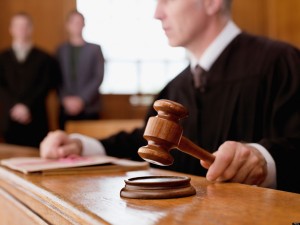
For example, suppose A and B have entered into a dispute concerning Property X and A takes the matter to Court. Upon receiving the summons, B contrives to sell the property immediately to C who wants to build a hotel on the said property. A cannot move to get a temporary injunction on C for the length of the trial because temporary injunction cannot be enforced on a third party.
Now, it would thwart the judicial process if the Court simply granted any injunction that the plaintiff prays for, so there are certain requirements that need to be taken care of before the Court will consider granting an injunction. The plaintiff must show that:
(a) On the face of the facts presented, the plaintiff is more likely to win the case. He must establish a prima facie case in his favour.
(b) Between himself and the defendant, the balance of convenience tilts towards him.
(c) Irreparable injury would result from not granting the injunction which would not be recoverable through compensation.
Permanent Injunction may be a mandatory direction or an order to abstain, made at the end of the trial when the Court has decided and decreed upon the rights of the parties and the steps to be taken to grant relief to the winning party.
Stay
A suit is stayed when another suit directly or substantially regarding the same subject matter and involving the same parties, or under the same title has already been instituted in any other Court in the country. This is done in order to prevent conflicting judgements and to save on precious time.
For example, A gives Y, an aspiring builder, a promissory note stating that he will pay him Rs. 1,25,000 at the end of one year to invest in his building business. Y enters into contracts with architects and agents to help his business grow. At the end of the year, Y does not receive the money and falls short of the payment of Rs. 1,25,000 he needs to make to an architect, X, who sues him. Y, in turn, sues A. A asks for a stay on the suit as another suit is already pending in Court regarding the same subject matter.
This is not a valid application because the rights and obligations arise out of two distinct, separate contracts.
The parties in both the cases are not the same. Therefore, an application for stay of this suit would not be valid.
Remand
As discussed before, the hierarchy of the Courts plays a big role in the various mechanisms used to keep a check on the system and preserve the interests of justice.
In this instance, if a subordinate court has disposed the case on a preliminary point or has dismissed the case or if the final decree is reversed by the higher court, the higher court will remand the case back to the subordinate court.
Try being a Judge!
X filed a suit against Y for the recovery of the sum of Rs.1,00,000 in the District Court. Y filed a counterclaim for the recovery of Rs. 2,00,000 in the same Court. This counterclaim was rejected as it was beyond the pecuniary jurisdiction of the Court, and sent to the High Court. Can the High Court remand the application to the District Court for disposal on a preliminary point?
First and Second Appeal
In order to safeguard citizens from the possible loopholes in the judicial process and to give the losing party an opportunity to be heard by a reviewing body, there is a provision for appeal in our judicial system. An appeal is always made to a higher authority, a reviewing body which will look into the matter on certain points and decide whether the adjudication previously made should be reversed or modified or retained. A person may appeal if he is aggrieved by the decision of the court, but there is no guarantee that his appeal will be allowed.
While an appeal may be a vital part of the judicial process, it is difficult to know till when the recursive appeal process may continue. An appeal sometimes causes inevitable delays in the delivery of justice, but at other times, it provides a much-needed intervention in order to reverse or modify a wrong decision.
An appeal is the judicial review of the decision of a lower Court by a higher Court. The higher Court will re-examine the case and the lower Court’s judgement and base its own order on this examination.
The three basic elements of an appeal are:
- A decision
- An aggrieved person
- A reviewing body.
It is not an inherent or natural right. An appeal may do three things:
- Reverse the order
- Modify the order
- Dismiss the order
The characteristics of a first appeal may be listed as follows:
- First appeal applies against the decree passed by the Court exercising original jurisdiction.
- First appeal may be filed in a superior Court which may or may not be the High Court.
- First appeal may be made on a question of fact, law or a mixed question.
- Letters patent appeal may lie against the judgment of a single Judge to a division bench.
It may be distinguished from a second appeal in the following ways:
- A second appeal lies against the decree of the first appeal
- A second appeal may be made only to the High Court
- The only grounds for a second appeal is that there is a substantial question of law.
- There is no letters patent appeal in second appeal.
For example, Mani and Ratna were in a dispute over a contractual obligation and Mani lost the case at the High Court appeal. He went to the Supreme Court on second appeal and said that he had never signed the contract, introducing an issue about the facts. It will not be an admissible issue.
These restrictions exist on the second appeal because allowing new facts to be introduced, or new arguments to be raised would undermine the previous judicial processes. Therefore, the only grounds for a second appeal is a question where the law is in question.
Reference, Review and Revision
A hierarchy exists between the courts in matters of jurisdiction and position of law. For instance, the higher the court, greater is the ambit of jurisdiction. And the interpretation given to a law by a higher court becomes binding on the lower court.
Therefore, when a lower court has a doubt over a question of law, it may refer the same to the High Court for an opinion.
Reference
A subordinate Court may state a case and refer it to the High Court for an opinion if there is a doubt over a question of law. The conditions for the use of review may be listed as follows
- It must be a pending suit or appeal in which the decree is not subject to appeal or a pending proceeding in execution of such decree
- A question of law or usage having force of law must arise
- The Court must have a doubt as to a question of law.
A question of law is of two types:
- When there are doubts about the validity of the Act/ordinance/regulation itself – as to whether it is compatible with the Constitution of India, and does not violate or take away any of the rights guaranteed under the Constitution or any other law. There may also be other questions that amount to those dealing with the law.
- Other questions
The other questions may include whether a law is applicable, or it is an ultra vires application of the law, or it may be a question of whether the law is being implemented in the right manner.
Review
If there is a glaring omission or mistake or error by the judiciary, a review can be adopted in the case of such manifest error on the face of judgment. The review is at the discretion of the Court and is not a right of the party.
The judiciary may decide to review a case if
- a party has tried to appeal a decree, but has not been allowed to do, or where the appeal has been dismissed because it is barred by time, or the decree was passed by an incompetent court.
- an appeal was allowed but not preferred. There is, however, no bar on the right to appeal. But where an appeal is preferred before a review the review is not permitted.
But if the review is taken at the initial stage, then the appeal is allowed. If the review is granted and the order or decree is reversed, the appeal will lapse and vice versa.
For example, the Kukrejas lost a case and decided to appeal it, but the Court told him that he would not be allowed to. They may apply to the Court for review of the matter.
Revision
The High Court may decide to revise any decisions taken by the lower courts under certain circumstances.The Code, under S. 115, empowers the High Court to entertain revision in any case decided in a subordinate Court.
The High Court may call for records of any case decided by a subordinate Court – if there is no provision for appeal:
- Exercised jurisdiction not vested by law, to go ultra vires their powers.
- Failed to exercise jurisdiction so vested, to go infra vires their powers.
- Acted in exercise of its jurisdiction illegally or partook in irregular activity.
However, this provision is only applicable where the order, if made in favour of the revisioner, would have finally disposed of the suit. Therefore, in the following cases, revision is not possible:
- In a suit for stay of proceedings.
- In a case which has provision for higher appeal.
- any order made or deciding an issue in the course of the suit.
For example, in a suit for divorce, the husband is troubled by the court’s order on maintenance and seeks to get the judgement revised to that extent. This is an order made in the course of deciding the suit, and therefore, no such revision will be possible.
Specific Relief Act
The Court’s jurisdiction to decree specific performance is discretionary, and it is not bound to grant such relief, but the discretion of the court should be guided by judicial principles and it should not be arbitrary or unreasonable. It should be capable of correction by a court of appeal.
Specific relief is to be granted only for enforcing individual Civil rights and not for enforcing penal laws.
The specific performance of any contract may, in the discretion of the court, be enforced:
- when there exists no standard for ascertaining the actual damage caused by the non-performance of the act contracted for; or
- when the act contracted for is such that monetary compensation for its non-performance would not amount to adequate relief.
The Act has provisions for the specific relief of transfer of movable or immovable property to a dispossessed person, as in most cases, it recognises contracts relating to such transfer as those that may be specifically enforced.
For example, Amit had a deal with Raj to buy some rare coins from him as he was an avid numismatist. Raj asked him to pay some money and said that he would give him the coins later. Later, Raj denied having made any such agreement. Is this a case for specific relief?
The above situation seems like one that would fall into the 2nd category of situations where specific performance may be enforced – because monetary compensation would not amount to adequate relief.
The following contracts cannot be specifically enforced, namely:–
(a) where non-performance of the act can be compensated for with money as an adequate relief;
(b) a contract which, from its very nature and content, the court cannot enforce specific performance of its material terms due to extensive detail or dependence on personal volition etc.
(c) a contract which is in its nature determinable;
(d) a contract the performance of which involves the performance of a continuous duty which the court cannot supervise.
[divider]
Questions and Answers
Principle: Res Judicata – no Court shall try any suit or issue in which the matter substantially and directly in issue has been directly or substantially in issue in a former suit between the same parties under the same title in a competent Court where such issue has been heard and finally decided.
Komal and Ranjit brought a dispute to court over a matter of certain property. The status of the same property had been the subject of a related family suit, which was just instituted in a neighbouring district court. Is the suit barred by Res Judicata?
Answer: No, the suit is not barred by Res Judicata as the provision bars any suit, the subject matter of which has already been decided by the Court. The suit, however, will be subject to Sub Judice.
Principle: Sub Judice: No Court shall proceed with the trial of any suit in which the matter in issue is also directly and substantially in issue in the previously instituted suit between the same parties and that the Court in which the previous suit is pending is competent to grant the relief claimed.
Principle: There is a difference between lack of jurisdiction and an irregular exercise of jurisdiction. A lack of jurisdiction results in a nullity of the judgement, whereas an irregular exercise of it can be remedied through appeal or revision.
Charu instituted a suit for possession against her landlord, which was beyond the time limit prescribed by the law since 3 years had already passed since the alleged injury took place. The Court exercised its discretion and adjudicated upon the matter, determining the rights of the parties. What steps can Charu’s landlord take now?
(a) He will have to comply with the judgement since the Court decided to listen to her pleas and pass a judgement.
(b) He can choose not to comply since the suit was barred by limitation and the decree is thus null and void.
(c) He will have to prefer an appeal to a higher court since the court did not lack jurisdiction but was exercising it irregularly.
(d) He will have to move the same court to withdraw the decree and declare the matter as barred by limitation.
Answer: (c). The Court was not lacking in jurisdiction, as it had the power to decide a case of that nature. The fact that the Court adjudicated upon the case although it was barred by time only makes it an irregular judgement because it was a wrong determination with the right jurisdiction, for which the appeal process may be preferred.
Principle: Under the principle of Res Judicata, a fresh suit may be barred only if the issues being raised were directly and substantially in issue in a previously decided case.
A and B were fighting a case and the Court decided in favour of B. A appealed the matter to a higher Court, and added some additional grounds by which it sought to prove B’s wrong. A was not allowed to plead on those grounds in the appeal. In a fresh, subsequent suit, A pleaded on those grounds against B. The Court held that this was barred by Res Judicata. A appealed the matter. Decide.
(a) The suit may be barred by Res Judicata only if the same matter was directly and substantially in issue in the previous suit.
(b) The Court was right in deciding that because A was continuously instituting frivolous suits.
(c) The Court was wrong in deciding that as the issues raised were not pleaded in the previous suit.
(d) The Court was right in deciding that because A had included those grounds in the appeal of the previous suit, and they had been dismissed.
Answer: (a). The grounds had been raised in the previous suit but A had not been allowed to plead on those grounds. Thus, the suit was not barred by Res Judicata as the Court had not made any determination on those issues.
Principle: When the relief to the applicant cannot be given without setting aside the decree against all the defendants, irrespective of who has shown sufficient cause, the decree must be set aside against all of them.
David sued Zeba and Zoyali over a promissory note, where Zeba was the debtor and Zoyali was the guarantor. An ex-parte decree was passed against both of them, but only Zeba showed sufficient cause for setting aside the decree. The Court set aside the decree against Zoyali as well as her liability was based on a common ground, and it had to avoid two conflicting decrees. Did the Court take the right step?
(a) Since Zoyali’s liability was contingent on Zeba’s default, the Court took the right step.
(b) Since Zoyali’s liability was joint and several with Zeba’s liability, the Court took the wrong step.
(c) As the Court had passed the ex-parte decree against both Zeba and Zoyali together, the Court had to set aside the decree against both of them.
(d) As the Court had set aside the ex-parte decree against Zeba, the decree against Zoyali could not stand, as that may have resulted in conflicting decrees.
Answer: (d). If the Court had set aside the ex-parte decree only against Zeba, she would have received a hearing on which the Court would pass a decree. This may have differed from the ex-parte decree against Zoyali, thus leading to two conflicting decrees on the same matter.
Logical Reasoning
Question 1:
A: Determination of Mesne profits is a preliminary decree.
R: There is debate as to whether there can be more than one preliminary decree in a single suit.
(a) Both assertion and reason are right, but the assertion is not an effect of the reason.
(b) The assertion is not valid, but the reason provided is a valid statement.
(c) The assertion and reason are both false and invalid.
(d) the assertion and reason are both right, and the assertion is a natural consequence of the reason.
Answer: (a). Although the statements make sense individually, there is no nexus between the assertion and the reasoning.
Question 2:
Assertion: If I am a resident of Mumbai, having property in Delhi and must file a suit regarding the said property, I will file it in Delhi.
Reasoning: For any suit except property suits, the proper place of suing will be the place of residence of the defendants.
(a) Both assertion and reason are right, but the assertion is not an effect of the reason.
(b) The assertion is not valid, but the reason provided is a valid statement.
(c) The assertion and reason are both false and invalid.
(d) the assertion and reason are both right, and the assertion is a natural consequence of the reason.
Answer: (d). The nexus to the assertion is contained in what the reasoning does not state but implies. Thus, both the statements are right and are connected.Which of the following would constitute a decree?
Question 3:
Which of the following would constitute a decree?
(a) a return of the plaint for lack of jurisdiction
(b) rejection of the plaint for the lack of merits in the case
(c) determination of the mesne profits in a partition suit
Answer: (b) and (c). (a) is not a determination of the rights and obligations as it does not involve any application of mind. The case is examined to find where the jurisdiction is situated, and if the court lacks jurisdiction, the plaint is returned.
Question 4:
Premise: When a case is decided on merits, it is not liable to be reversed purely on technical grounds unless there is a failure of justice. Which of the following situations would amount to an objection on mere technical grounds?
(a) objection as to place of suit not brought up at the first instance.
(b) objection as to joinder of proper parties.
(c) objection when new evidence has come to light with the potential to affect the material facts.
Answer: (a) and (b) would amount to grounds on which the case would not be reversed, as they are merely technical and do not affect the material facts of the case.
Question 5:
In which of the following cases would the suit be dismissed:
(a) misjoinder of necessary parties with unnecessary parties.
(b) non-joinder of proper parties.
(c) non-joinder of necessary and proper parties.
(d) misjoinder of proper parties.
Answer: The suit can only be dismissed on the grounds of non-joinder of necessary parties, option (c).
 Serato DJ Crack 2025Serato DJ PRO Crack
Serato DJ Crack 2025Serato DJ PRO Crack


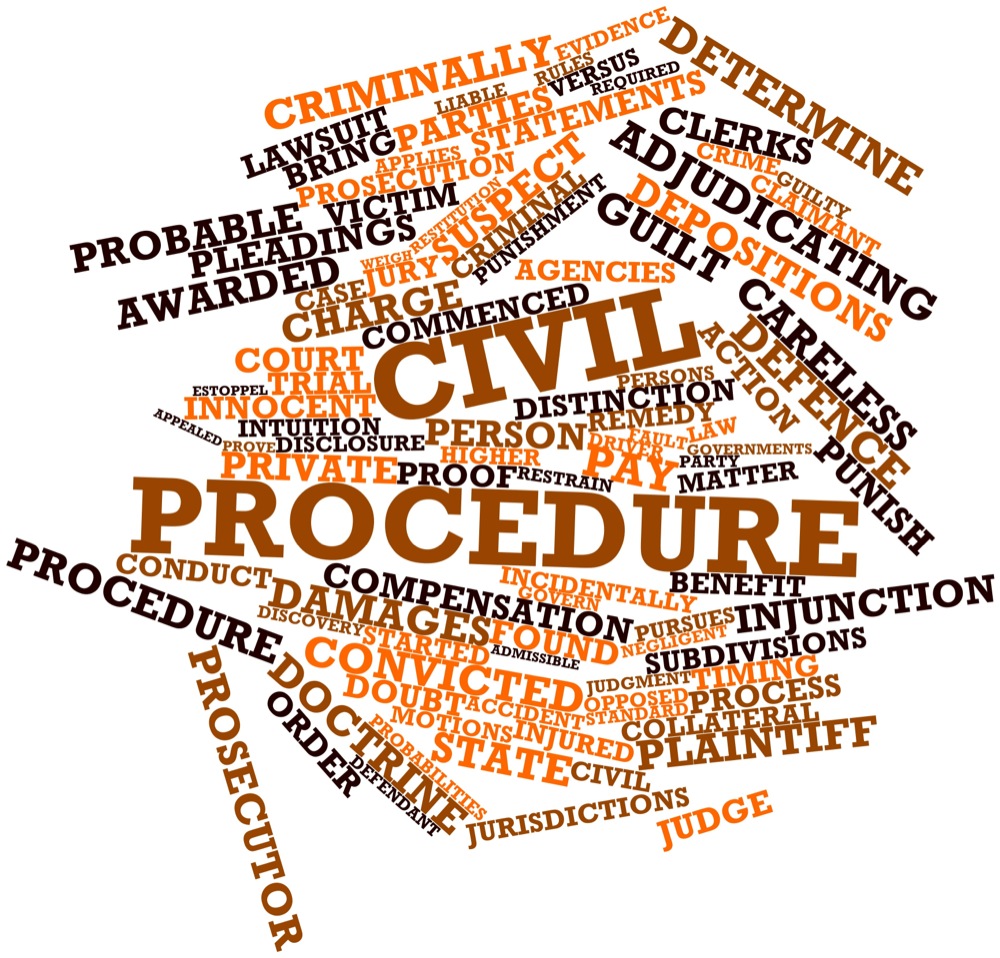

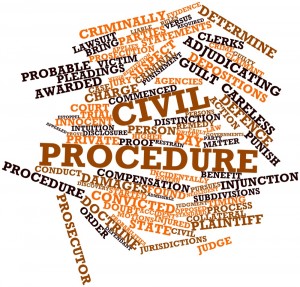


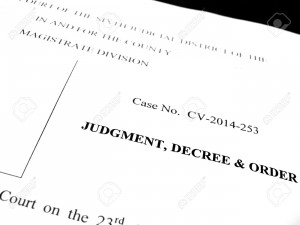





 Allow notifications
Allow notifications



You confused in Res Judicata and Sub Judice. Kindly check it again. Thanks!
[…] Analysis of the Code of Civil Procedure. […]